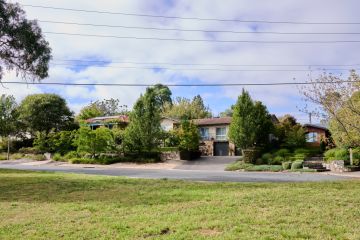ACT landlords most likely to invest interstate
Canberra landlords are more likely to own an interstate property than investors in any other state or territory, according to new research.
However, experts predict Canberra’s low vacancy rates and strong rental yields could soon see investors return to their home town.
Statistics compiled by landlord insurance specialist Terri Scheer Insurance showed that just 49.3 per cent of Canberrans’ investments were within the ACT.
The Northern Territory and Tasmania also had a strong proportion of interstate investors, with just 54 and 62 per cent of residential investments falling within their own jurisdictions.
Queenslanders were most likely to invest at home with 92.1 per cent of their residential investments within the state’s borders.
Terri Scheer Insurance executive manager Carolyn Parrella said the research, which was compiled from the company’s policy holders’ data, highlighted some interesting trends.
“Canberra represents the only state or territory where interstate investment is preferred over local investment,” Ms Parrella said.
Ms Parrella said “investment hotspots” for Canberrans were scattered along the east coast.
Queensland was the most popular interstate investment location, accounting for 24.7 per cent of Canberran investments.
Properties in NSW and Victoria accounted for 15.5 and 5.5 per cent of Canberran landlords’ investments.
Ms Parrella said Queensland was a popular location with investors across the country, as many used their property as a holiday home. Others were renting out a home they had earmarked for their retirement.
Domain chief economist Andrew Wilson agreed that there were a number of factors that contributed to the territory’s high proportion of interstate investment.
“One of the key aspects is that Canberra has the highest income level of all the capital cities,” Dr Wilson said.
According to the latest Domain statistics, gross rental yields for units were 5.62 per cent – the highest in the country – while yields for houses were 4.39 per cent, topping Sydney, Melbourne and Perth.
“That comes from a sustained period of price growth,” Dr Wilson said.
“Canberra has a tight rental market in terms of vacancy rates. We’re seeing a tightening of unit vacancy rates, which appears to indicate that the higher level of unit construction is being absorbed and the demand has risen.
“With rents rising and vacancy falling, apartments will begin to become quite attractive for local investors.”
Colliers International’s director of residential project marketing, Derek Whitcombe, said some of his local clients had a diverse portfolio with investments in various states and territories.
“A lot that buy in Canberra have a rental property in Queensland or down the coast that they plan to occupy themselves,” Mr Whitcombe said.
While these are among the worthwhile interstate investments that Mr Whitcombe has come across, he said other interstate investors haven’t been as successful.
“The Canberra market was flat for a couple of years and people looked at what was going on in Sydney and Melbourne,” Mr Whitcombe said.
“Unfortunately the price increases were not sustainable and the numbers didn’t support a good mid- to long-term investment.
“They decided it was time to get out of that and go back to Canberra – the Canberra market is more stable and predictable. Investors are buying into secure locations with centrality near universities and employment centres.”
Ms Parrella said interstate investors should ensure that they have a property manager who is based in the area and knows it well.
“It makes such good sense to have a local person managing their property,” she said.
“While self-managing an investment property may appeal to some landlords as a way of reducing costs, it can require significant resources and time commitment.”
We recommend
We thought you might like
States
Capital Cities
Capital Cities - Rentals
Popular Areas
Allhomes
More







